Catholic Customs
 |
 |
 |
 |
 |
 |
 |
The Wheat & Cherry Branches
of St. Barbara’s Day
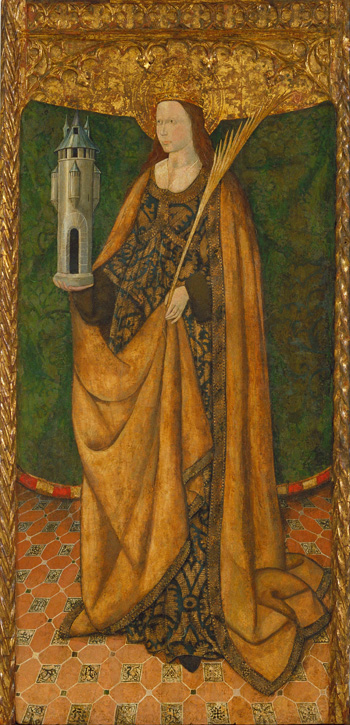
St. Barbara, often portrayed with wheat & the tower where her father imprisoned her
Because grain was the source of life for peoples of the past, many rituals and prayers developed for special feast days imploring God's blessings on the harvest for this life-giving crop. Our Lord even chose to give Himself to us under the form of Bread. How fitting, then, that during the time of preparation for the coming of He Who is the Bread of Life, grains and bread should play a prominent role in the customs of Catholic peoples.
An old Syrian legend relates that one day as St. Barbara was going out to bring bread to the poor, her father met her, sword in hand, demanding to be shown what she was hiding in her skirt. Immediately, his sword became a crochet hook and St. Barbara's bread turned into roses. (1)
Another wheat legend of St. Barbara recounts that as St. Barbara was fleeing from her father across a newly planted wheat field, she was concealed from his eyes by the wheat that miraculously grew tall and green. These legends seem to explain why people in Eastern countries traditionally make special breads and grain dishes on St. Barbara's Day in her honor. (2)
In Greece, a boiled wheat broth known as varvara, boiled wheat porridge (kollyva), or honey cakes were made on this day and offered to others to invoke St. Barbara's protection, for she guarded children against smallpox.
In the village of Siyi, the honey cake was a thick leavened flat cake covered with honey. The housewife placed the honey cake on a table and carried it to a crossroad. A priest came to make an invocation to St. Barbara over the cakes which were then distributed to passersby. In Baindir, the women brought a kollyva to the crossroads instead of the honey cake. (3)
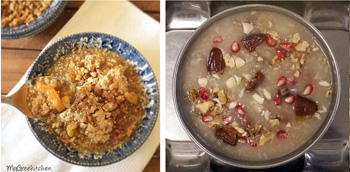
Burbura and varvara porridges
Then, it was believed that St. Barbara would come to visit their homes through the chimney. If she found the house clean and tidy and refreshments prepared for her she would protect the children of that house from smallpox. (4)
Catholics in Syria, Lebanon, Jordan, Turkey and Palestine know Saint Barbara’s Day as Eid il-Burbara. The traditional dish prepared is a wheat porridge known as burbara, sweetened with various spices, dried fruit, nuts and sugar or honey. (5)
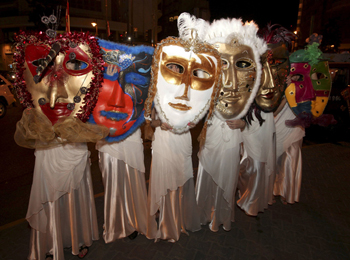
Girls in Beirut costumed as St. Barbara with giant masks
In some Syrian homes, the children go to the houses of poor families or families in mourning bringing sweetmeats as gifts. They give the traditional greeting: "May God bless you and bring you happiness every year. Father and Mother beg you to accept these gifts from us." (7)
In Syria on December 3, St. Barbara's Eve, family, friends and neighbors are invited over to feast on sweetmeats made of honey, nuts, fruits and wheat that are beautifully arranged on a table. The mistress of the house cooks burbara over the fire and then mixes rose water, honey and spices into it. While it is cooking, the head of the house tells the story of St. Barbara to the guests, after which all are invited to enjoy the porridge. (8)
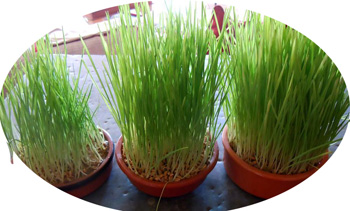
Three bowls of wheat seed symbolizing the Trinity
In Burgenland, Austria and areas of the Levant, the same custom is observed. (10) The Austrians call the wheat "Barbara wheat" and place the green shoots around a candle at the Christmas Eve meal. The Hungarians also germinate wheat seeds, but on a different date – the feast of St. Lucy, December 13. Throughout Advent, the peasants of the past prayed fervently to St. Barbara (or to St. Lucy) that the fields would be protected from storms and grain diseases. (11)
French peasants carefully watch the growth of this wheat, because the sprouting time and height of the shoots predict the success of the coming harvest. A Provençal saying affirms: "When the wheat goes well, everything goes well."
After the Christmas festivities, the green shoots are planted in the fields to bring blessings on the harvest for the new year. In some areas, the shoots are dried and thrown into the fire during thunderstorms to invoke the protection of St. Barbara. (12)
St. Barbara's Branch
In Germanic countries, a branch from a cherry tree was cut on St. Barbara's Day and placed in a bowl of warm water next to the stove to force the branch to bud and produce blossoms in time for Christmas. The cherry-branch was known as "St. Barbara's Branch" (Barbarazweig).
A German legend explains that when St. Barbara was in her tower, she found a dry branch from a cherry tree. She placed it in a cup and watered it with a few drops of her drinking water every day. On the day of her execution, the cherry branch bloomed, and she rejoiced as she realized this foretold that she would soon die to this life and enter Eternal Life with Our Lord. (13) A medieval legend tells that flowers bloomed on St. Barbara's grave at Christmas after her death.
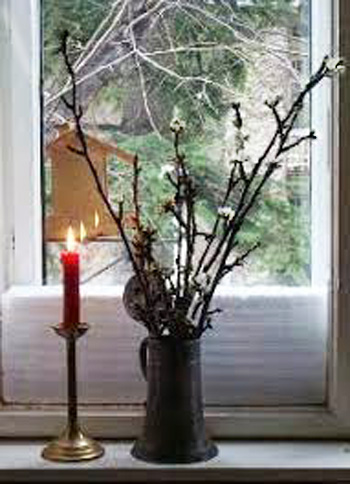
A cherry branch blossoming for Christmas
There were many predictions associated with this popular custom. If the Barbara Branch had many blossoms on Christmas Day, then the coming year would be blessed with good luck and a successful harvest. Bad luck was to be expected if the branch had no blooms. (15) The person whose branch had the most blossoms by Christmas was said to be "Mary's favorite." (16) If a young maiden's cherry branch blossomed on Christmas Eve, it was believed that she would be married in the coming year.
The "St. Barbara's Branch" is an ancient tradition symbolic of new life and Spring, because the barren branch blooms and turns green in the middle of winter. How fitting since Christ came as a bud from the root of Jesse (Is. 11.2) in the dead of winter, bringing new life that would be imparted to mankind in the Spring.
Similar to the French wheat sprouts, the Barbara Branches were also used to adorn the Crèche, thus giving St. Barbara the honor of offering beautiful flowers to the Christ Child. Making a Barbara branch (see here) or Barbara wheat would be a lovely custom to incorporate into American homes.
St. Barbara's feast day announces the approach of Christmas. These charming customs from the past ought to inspire us to honor St. Barbara by making something dead (dead branches and wheat seeds) produce life (blooms and shoots). Offering these wheat shoots and budding branches would be a fitting tribute to Our Lord on the feast of His Nativity.
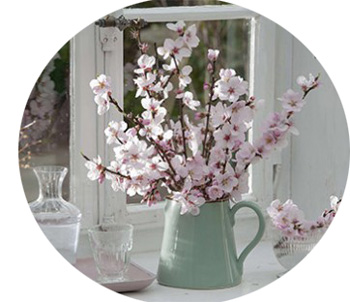

- See here https://www.mikellshiddentreasures.com/todays-treasure/st-barbaras-day
- https://culturico.com/2019/12/04/how-is-saint-barbara-associated-with-a-delicious-dish/
- George A. Megas, Greek Calendar Customs (Athens: B. and M. Rhodis, 1963), p. 24.
- Mercia MacDermott, Bulgarian Folk Customs (London and Philadelphia: Jessica Kingsley Publishers, 1998), p. 158.
- https://www.bookofdaystales.com/saint-barbara/
- https://culturico.com/2019/12/04/how-is-saint-barbara-associated-with-a-delicious-dish/
- Dorothy Gladys Spicer, Folk Party Fun (New York: Association Press, 1954)
- Ann Ball, Catholic Traditions in Cooking (Huntington, Indiana: Our Sunday Visitor, 1993), pp. 139-140.
- William S. Walsh, Curiosities of Popular Customs and of Rites, Ceremonies, Observances, and Miscellaneous Antiquities (Philadelphia: J. B. Lippincott Company, 1898), p. 95.
- https://culturico.com/2019/12/04/how-is-saint-barbara-associated-with-a-delicious-dish/
- https://www.advent-austria.at/barbarabrauchtum/
- ttps://www.marvellous-provence.com/arts-and-culture/traditions/99-the-santons-and-cribs-of-provence.html
- https://www.kath-kirche-vorarlberg.at/organisation/familien-feiern-kirchenjahr/links-dateien/02Barbara_06.pdf
- http://www.brauchtumsseiten.de/a-z/a/adventsbrauchtum-boten-der-natur/home.html
- Francis X Weiser, The Holyday Book (London: Staples Press Limited), p. 197.
- https://www.fisheaters.com/customsadvent2a.html
Posted December 3, 2021
______________________
______________________








